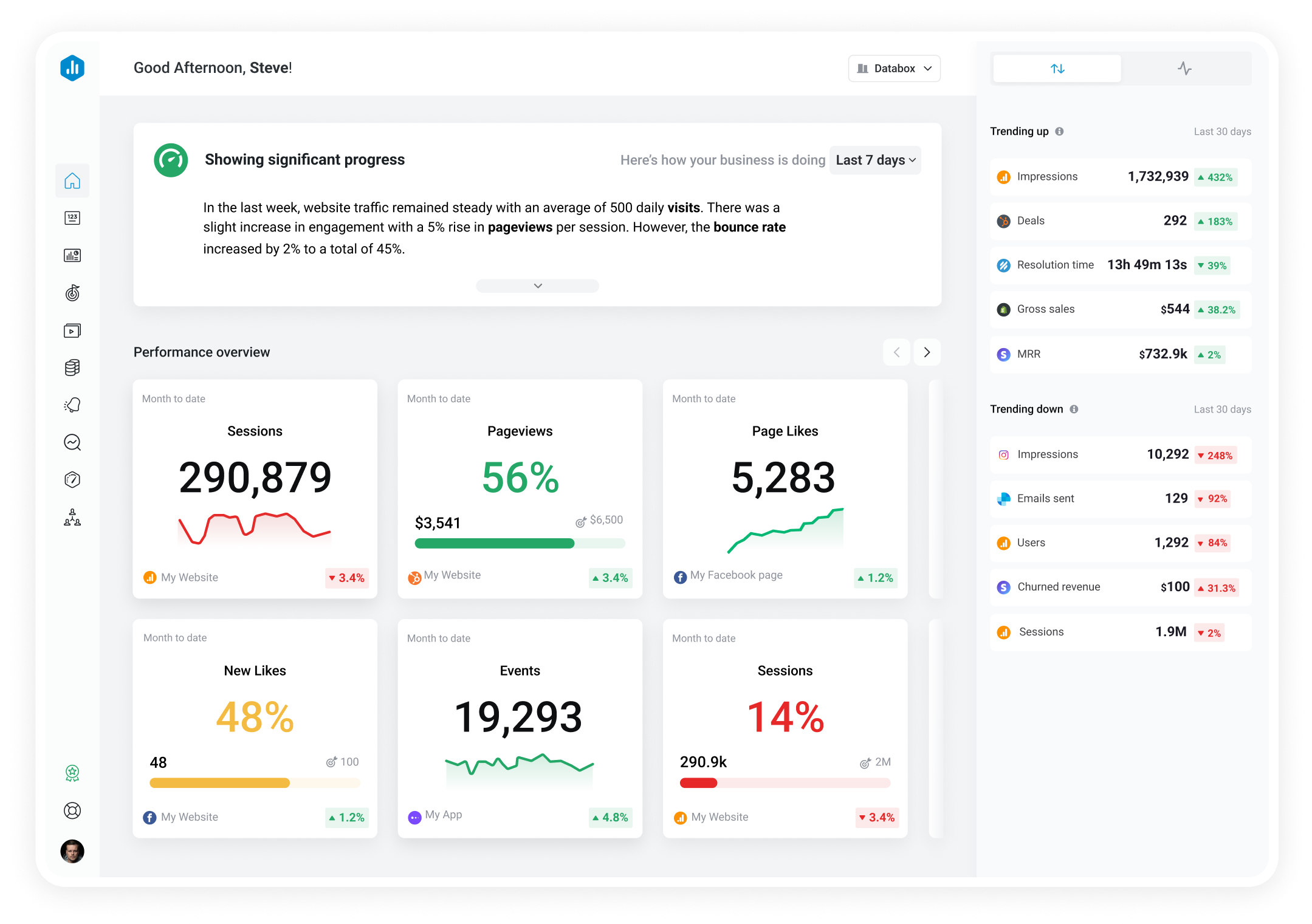Track all of your key business metrics from one screen
GET STARTED
 Adobe Analytics
Orders
Adobe Analytics
Orders The Orders metric in Adobe Analytics measures the total number of completed purchases or orders made on your website or app during a specified time period.
With Databox you can track all your metrics from various data sources in one place.
The orders metric refers to the number of completed transactions made on a website.
It’s one of the most important metrics for any ecommerce website or online store as it directly showcases their performance and ability to convert visitors into paying customers.
Each order represents a successful conversion, where a user has gone through the entire sales process and completed the transaction.
Calculating orders for an online store comes down to simply counting the number of transactions made during a specific time frame.
Let’s say an ecommerce website saw these figures during a given month:
In this example, the total number of orders for the month of June would be 6, as there were six completed transactions within that time period.
The definition of a “good” number of orders can vary significantly depending on the size, industry, and specific goals of your online business.
Other factors that influence your orders include marketing efforts, how well you drive traffic to your website, how good your copy and design are, and similar factors.
For example, a good number of orders for an ecommerce site could range from a few hundred to several thousand orders per month. High-performing ecommerce websites might aim for thousands of orders per month or even more.
We even pulled out data from our Benchmark Groups product and found that a good number of orders in Shopify is around 300-400 orders a month, according to Shopify Benchmarks for All Companies.
For SaaS platforms, the number of orders is usually reflected in the number of new subscriptions or renewals. A good number of orders for a SaaS platform could range from a few dozen to a few hundred new subscriptions per month.
Furthermore, websites that sell niche or high-value products may have a lower number of orders but still achieve significant revenue due to the higher average order value. A few dozen to a few hundred orders per month might be considered good for such websites.
By the way, if you want to stay on top of future trends and be able to instantly compare your performance to companies just like yours (in any given industry), you can join our Benchmark Groups – it’s free for everyone!
More orders mean more revenue, greater brand visibility, and better customer engagement, so it’s no surprise that this is the key objective for pretty much every online store in the industry.
Let’s take a look at some of the most effective strategies that can lead to more orders and boost your bottom line:
More resources to help you improve:

Used to show a simple Metric or to draw attention to one key number.

Used to illustrate numerical proportions through the size of the slices.

Used to show comparisons between values.
Databox is a business analytics software that allows you to track and visualize your most important metrics from any data source in one centralized platform.
To track Orders using Databox, follow these steps:
 Goals
Goals Scorecards
Scorecards Metric Digest
Metric Digest Metric Builder
Metric Builder Data Calculations
Data Calculations Performance Screen
Performance ScreenAdobe Analytics dashboard template uses visits, conversion rates and customer loyalty to help you understand your customers as people — what they want, need, and believe.

